- Since November 2023, Vietnam has expanded the area of its artificial islands, adding an area equivalent to 692 football fields, totaling about 2,360 acres.
- Vietnamese expansion in the South China Sea has heightened tensions with China and other neighboring countries, potentially prompting more aggressive military and diplomatic responses.
- The South China Sea, crucial to global trade and rich in natural resources, is becoming increasingly militarized, raising the risk of international conflict.
In recent years, the South China Sea has become one of the world’s most geopolitical flashpoints. In a move that mirrors China’s actions, Vietnam is accelerating its efforts to build artificial islands.
This strategy has the potential to alter the balance of power in the region, increasing tensions between neighboring countries and potentially triggering new conflicts. With an already complicated territorial dispute, Vietnam’s recent expansion could end up accelerating military confrontations and diplomatic disputes.

How did China pioneer artificial expansion in the South China Sea?
China began its artificial island-building campaign in 2013, transforming submerged reefs and sandbars into full-fledged military bases.
Between 2013 and 2015, China created approximately 4,650 acres—the equivalent of about 3,523 football fields—of new land in the Spratly and Paracel Islands, areas hotly contested with other countries in the region.
The development includes airstrips, ports, and radar facilities capable of supporting large-scale military operations. These islands now serve as strategic outposts for China, solidifying its claims to vast areas of the sea.
Beijing argues that its actions are legitimate and based on historical rights. However, these expansions have been widely criticized by the international community, including the United States, which sees them as an attempt to militarize one of the world’s most important sea lanes.
The South China Sea is crucial to global trade, with about a third of the world’s maritime trade passing through these waters.
China’s strategy is not limited to island-building alone. Beijing has also used economic and military pressure tactics to assert its claims.
Frequent patrols by the Chinese coast guard and the presence of maritime militias have increased pressure on neighboring countries, making it harder for them to challenge China’s actions. China has also invested in civilian infrastructure on the islands, such as research centers and monitoring stations, to reinforce its presence and justify its activities.
How is Vietnam copying China’s strategy in the South China Sea?
In response to China’s actions, Vietnam has stepped up its own dredging and landfill operations to create islands.
In the past three years, the area of Vietnamese artificial islands has increased more than sevenfold, reaching approximately half the size of the islands created by China.
Since November 2023, Vietnam has added an area equivalent to approximately 524 football fields across 10 sites in the Spratly Islands, bringing the total reclaimed land to about 2,360 acres.
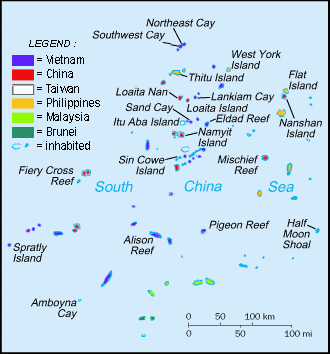
These expansions are not just about increasing territory, but also about strengthening military infrastructure. Vietnam has been building airstrips, ports and other military facilities on the newly created islands.
For example, Vietnam’s largest base, Barque Canada Reef, has nearly doubled in size in the past six months, growing from 180 to 312 football fields. The reef can now support a 3,000-meter airstrip, comparable to those found on China’s largest artificial islands.
Vietnam’s strategy is clearly influenced by Chinese actions. By following Beijing’s lead, Hanoi is sending a clear message that it is willing to aggressively defend its territorial claims.
However, in doing so, Vietnam is also increasing the risk of direct military confrontations with China and other claimants, such as the Philippines and Malaysia.
In addition to military considerations, Vietnam’s island expansion is also aimed at strengthening the country’s economic presence in the region.
The South China Sea is rich in natural resources, including oil and gas, and is a vital fishing ground. By consolidating its control over more islands and reefs, Vietnam can secure better access to these resources, which is important for its economy.
What is the history of conflict between Vietnam and China?
The South China Sea has been a point of contention between Vietnam and China for decades. Both countries have historical claims to several islands and reefs in the region.
In the 1970s and 1980s, there were several naval clashes between the two countries, resulting in human and material losses. One of the most memorable incidents occurred in 1988, when a naval battle between China and Vietnam resulted in the deaths of more than 70 Vietnamese soldiers.
More recently, with China’s construction of artificial islands and Vietnam’s response, tensions have resurfaced.
In 2014, the deployment of a Chinese oil platform in disputed waters led to violent clashes between Chinese and Vietnamese vessels. This incident sparked anti-China protests in Vietnam, highlighting the deep distrust between the two countries.
In addition to maritime disputes, there is also a historical context of rivalry and land conflict between China and Vietnam. The Sino-Vietnamese War of 1979, although brief, left deep scars and contributed to mutual distrust.
However, despite recent efforts to improve bilateral relations, such as diplomatic visits and trade agreements, territorial disputes in the South China Sea continue to be a source of tension.
Vietnam’s foreign policy has focused on balancing its relationship with China while seeking support from other international actors. Hanoi has cultivated closer ties with the United States, India and the European Union, seeking to counterbalance Chinese influence.
This approach, known as “external balancing,” aims to ensure that Vietnam is not isolated in its disputes with China and that it has powerful allies to support its territorial claims.
Is there potential for a conflict in the South China Sea between Beijing and its neighbors Vietnam and the Philippines?
Vietnamese expansion into the South China Sea has the potential to exacerbate tensions not only with China, but also with other countries in the region, such as the Philippines.
Recent incidents, such as collisions between Chinese and Philippine ships and China’s use of water cannons, highlight the fragility of the peace in the area. Vietnamese moves could be seen as a provocation, leading to a more aggressive response from Beijing.
The territorial dispute in the South China Sea is not only a question of sovereignty, but also of control over vital trade routes and rich natural resources. Therefore, any military escalation in the region could have devastating consequences for regional and global stability.
The United States has also been involved in this scenario, supporting Southeast Asian countries in their disputes with China. The American naval presence in the region is seen as a counterbalance to Chinese influence.
However, this presence also increases the risk of military incidents, such as the one that occurred in 2018, when a Chinese destroyer nearly collided with an American warship in the South China Sea.
In addition, ASEAN (Association of Southeast Asian Nations) has attempted to mediate disputes and promote a Code of Conduct in the South China Sea.
However, the lack of unity among ASEAN members and China’s resistance to accepting binding terms – that is, when the parties involved are legally required to comply with what is established in this agreement – have hindered progress.
Recent Vietnamese expansion may pressure ASEAN to take a firmer stance, but it could also further divide the bloc. For the Philippines, the situation is equally tense.
In 2016, the Permanent Court of JusticeThe Hague has ruled in favor of the Philippines in a dispute with China, invalidating Beijing’s extensive claims in the South China Sea.
However, China has rejected the ruling and continued its activities in the region. The Philippine government under President Rodrigo Duterte has adopted a conciliatory stance toward China, seeking investment and economic assistance.
However, recent incidents, such as the use of water cannons against Philippine boats, have increased pressure on Manila to take a tougher stance.
The international response to the situation in the South China Sea is also a factor. The European Union, Japan and Australia have expressed concerns about the militarization of the region and advocated freedom of navigation.
These countries have conducted freedom of navigation operations, sailing near the disputed islands to challenge Chinese claims.
Coordinating these actions with the United States and other allies could increase pressure on China, but it could also heighten tensions. By following China’s island-building strategy, Vietnam is sending a clear message about its determination to defend its territorial claims.
However, this arms race at sea could easily spiral out of control, turning a territorial dispute into an open conflict with international implications.
Effective diplomatic mechanisms and the promotion of constructive dialogue are urgently needed to avoid a military escalation that could destabilize the region and have global repercussions.
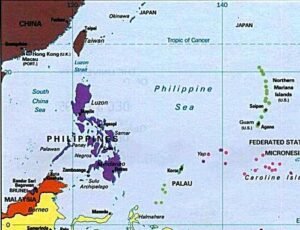
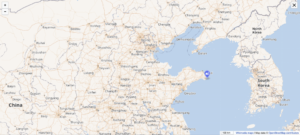

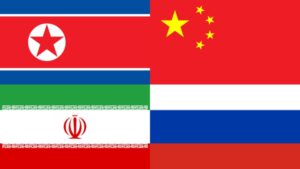


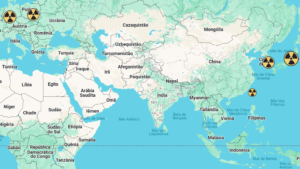

Be First to Comment